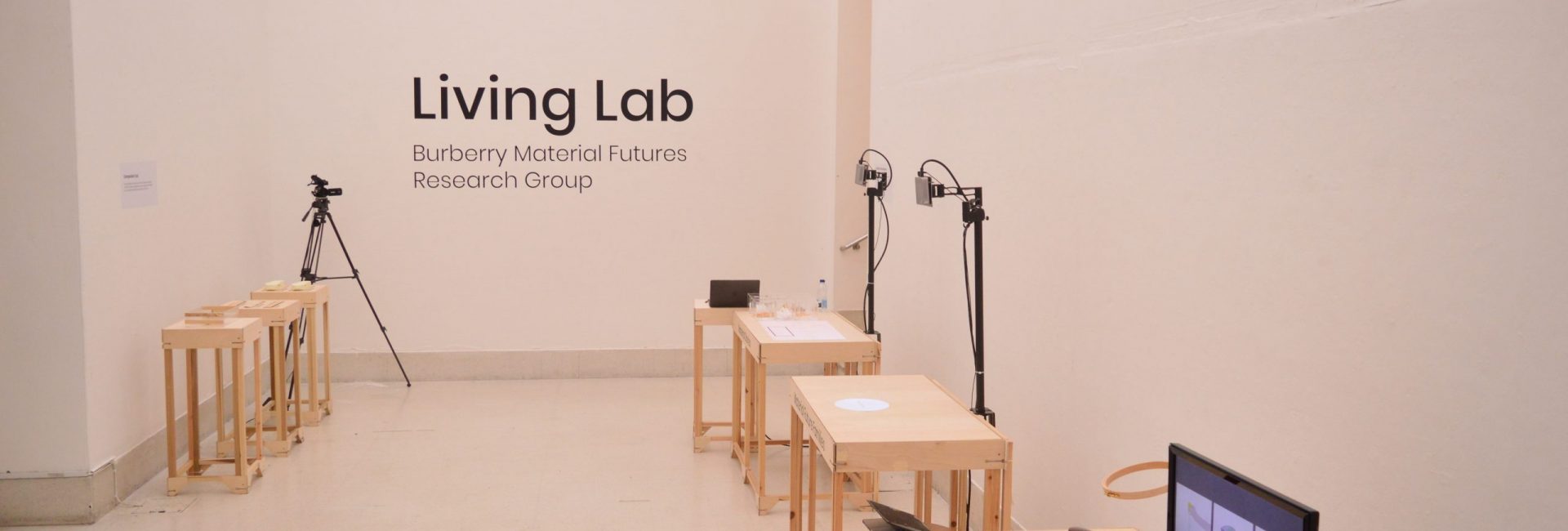During the spring and summer of 2019 I joined the Burberry Material Futures Research Group (BMFRG) at the Royal College of Art, under Prof Sharon Baurley. The BMFRG takes a systems approach to materials research, thereby proposing new realities that re-couple use of material resources to human wellbeing and economic development, in order to help society transition to a more sustainable existence. The systems approach integrates three main themes: Sustainable Future Materials, Sustainable Future Manufacturing, and Sustainable Future Consumer Experience. During my time there, I worked with Dr Bruna Petreca, lead of the Consumer Experience strand, and the rest of the BMFRG team, to conceptualise and develop a “Living Lab”, a simulated commercial space for sustainable selection and use of speculative and near-future biomaterials. The living lab took place for 5 days during July 2019 at the Royal College of Art.
Working with customised sandals as a case study example, the visitors started by selecting a sole and a strap from a range of available options, based solely on their sensory properties. They would then on discover more information about the origin, composition, and properties of their selections by going through 3 interactive workstations: Material Stories, Future Families, and Material Gym.
The Material Stories workstation was about discovering the origin and lifecycle stages of the material. Inspired by, and combining elements form petri dishes and jigsaw puzzles, this activity asked participants to select, and place in order plastic containers that contained samples of the previous forms of the selected material (e.g. orange peels, pulp, bleached pulp, and finally, fibres). Once placed in the right order, a projector would be triggered -through a wizard of Oz setting- and play back additional layers of provenance information.
At the Future Families workstation, the participant would place the strap or sole of her selection in the indicated spot, with this action triggering a projection depicting future and alternative uses of that material. The aim here was to prompt people to think twice before they treat a material as a waste, already from the point of purchase.
Material Gym involved a collection of both traditional and digital tools for testing physical material properties, such an embroidery hoop to test elasticity and a liquid dropper to understand the material’s response to water.
The workshop sparked discussions about the role of more immersive and embodied experiences, and the information they conveyed, in reimagining new relationships across materials, retailers, manufacturers, and consumers.
